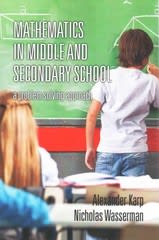Question
1. Elephants sometimes damage trees in Africa. It turns out that elephants dislike bees. They recognize beehives and avoid them. Can this information be used
1. Elephants sometimes damage trees in Africa. It turns out that elephants dislike bees. They recognize beehives and avoid them. Can this information be used to keep elephants away from trees? Researchers want to design an experiment to answer this question using 72 acacia trees and three treatments: active hives, empty hives, and no hives.
Explain why it is beneficial to include some trees that have no hives. Choose only one answer
a. If we include some trees that have no hives, then we will eliminate the effects of confounding variables.
b. It is important to include some trees that have no hives so that the experiment will be double blind.
c. If we include some trees that have no hives, it will eliminate the placebo effect and give us more accurate results.
d. A control group would show the amount of damage that trees with no hives sustain from elephants. This would provide a baseline for comparing the amount of damage sustained by trees with empty hives and active hives.
2. A study of voting chose 663 registered voters at random shortly after an election. Of these, 72% said they had voted in the election. Election records show that only 56% of registered voters voted in the election.
Which of the following statements is true?
a. 72% and 56% are both statistics.
b. 72% is a statistic and 56% is a parameter.
c. 72% and 56% are both parameters.
d. 72% is a parameter and 56% is a statistic.
Step by Step Solution
There are 3 Steps involved in it
Step: 1

Get Instant Access to Expert-Tailored Solutions
See step-by-step solutions with expert insights and AI powered tools for academic success
Step: 2

Step: 3

Ace Your Homework with AI
Get the answers you need in no time with our AI-driven, step-by-step assistance
Get Started


